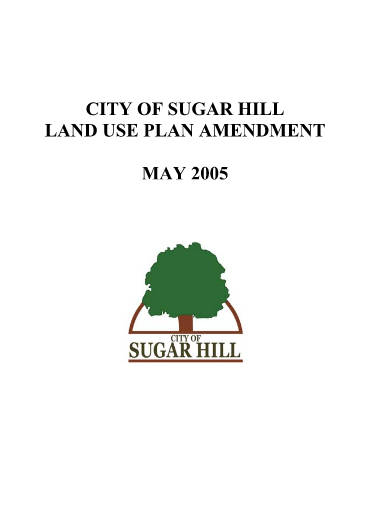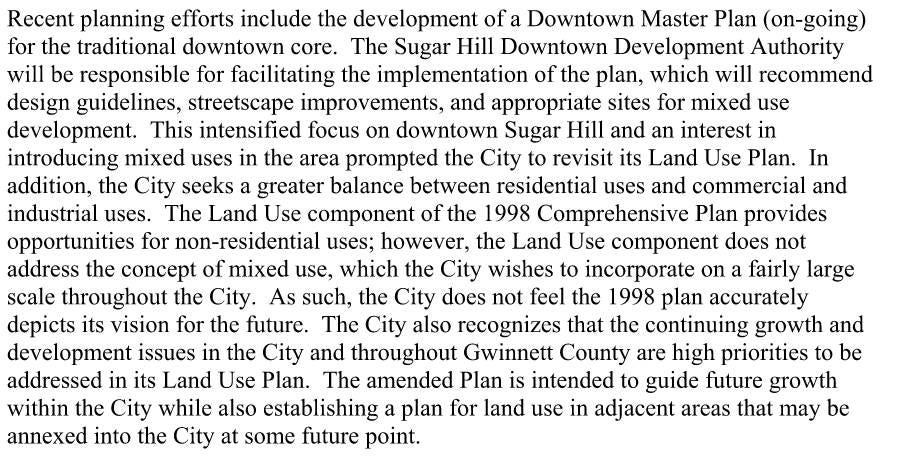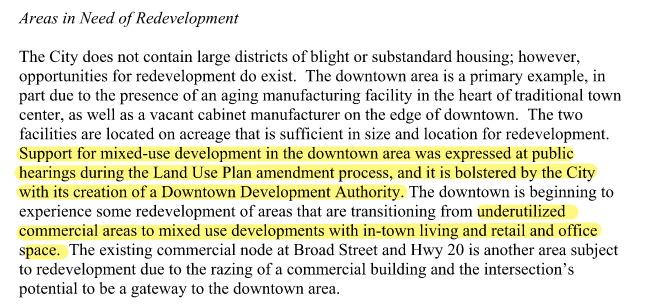Sugar Hill's 2005 Land Use Amendment was a transformative change in direction
A move from suburban sprawl towards a traditional development pattern
In our last article on the 2005 Town Center Master Plan, we discussed how the city was breaking away from a suburban bedroom community to a city with an identity. A move to become a Strong Community.
As the Town Center Master Plan was being completed, it was soon realized that this change in direction required more than simply a master plan for downtown - it needed to be codified through a land use amendment that would be city wide.
That’s where the 2005 Land Use Amendment stepped in and spelled out quite clearly the direction the city was going and how it should change. It’s a relatively short document at 15 pages, but it contains a lot of great framework for the change.
In fact, the boldest statement happens in just the second paragraph of the document. If you read nothing else from the document, that paragraph alone speaks volumes.
The city had correctly decided to move away from the typical autocentric suburban development pattern of the 1998 Comprehensive Plan of stark separation of land uses to a more balanced and sustainable pattern of growth.
The plan reveals that, at the time, just 26% of the city’s area was undeveloped. It meant that stewarding the remaining undeveloped property along with the redevelopment of downtown were going to be critical to the future success of the city.
The plan directly addresses the need for redevelopment.
The plan clearly states the community’s desired vision.
The protection of existing neighborhoods was accomplished by concentrating the bulk of the city’s density and mixed-use (second and third bullets) in the Town Center Overlay area and specifically within the Central Business District (see the previous article for more on what those are). In fact, the Central Business District represents just 3% of the total land area in the city and is the only area in which mixed-use developments have been approved.
Under the “Future Land Use Need” heading for “Residential”, more specific mentions of what that looks like is revealed:
It also discusses the need in the second paragraph of how the typical suburban separation of uses is a problem and that allowing goods and services to be built near residential areas makes them more accessible since residents won’t have to drive as far and may even be able to walk to get goods and services. That follows along the final bullet point of the Community Vision - enhancing and increasing pedestrian connections.
Finally, under the “Commercial” and “Industrial” headings for “Future Land Use Need”, the city restates in both land uses how important downtown is to the future of the city:
Additionally important about this land use amendment is the urgency expressed on the first page. The city acknowledges that it won’t update its comprehensive plan until 2008 (which we’ll cover in a future article) but felt it necessary to change the direction of growth in the city immediately through a land use amendment.

The 2005 Land Use Amendment was a transformative change in direction for the city - one that would put the city on a sustainable trajectory, making it a Strong Community.









Thanks so much for providing this info! Keep up the great work in downtown Sugar HIll!